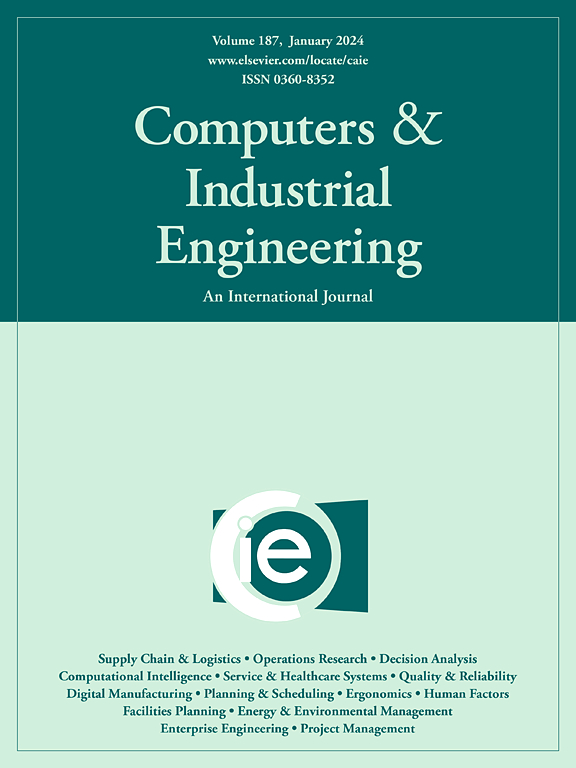基于数据驱动集成模型的同步框架下锂离子电池健康状态估计与剩余使用寿命预测
IF 6.5
1区 工程技术
Q1 COMPUTER SCIENCE, INTERDISCIPLINARY APPLICATIONS
引用次数: 0
摘要
准确的健康状态估计和剩余使用寿命预测可以提高锂离子电池系统的安全性,延长其使用寿命。提出了一种基于数据驱动集成模型的鲁棒健康状态估计和剩余使用寿命预测框架。首先,提取出反映电池老化状态的三个具有代表性的健康指标,并根据充放电过程中的能量信息开发出这些健康指标;其次,建立了数据驱动的电池老化状态空间表示集成模型,利用高斯过程回归建立了历史容量序列和当前容量的状态方程,并映射了容量退化与健康指标的关系,构建了观察方程。第三,引入粒子滤波,结合数据驱动集成模型,将当前提取的健康特征作为观测值,实现电池容量闭环估计,抑制测量噪声;同时,将可用估计容量反馈到模型中,构建动态体系结构。第四,针对剩余使用寿命预测中观测值不可用的问题,引入自回归模型从历史健康特征滚动预测未来观测值,完成闭环同步框架,并提出基于极限学习机方案的误差补偿机制,进一步提高估计精度。最后,对7块电池进行了实际老化实验,实验结果表明,该方法具有较高的精度和鲁棒性。本文章由计算机程序翻译,如有差异,请以英文原文为准。
Robust state of health estimation and remaining useful life prediction for lithium-ion battery with synchronous framework using data-driven integrated model
Accurate state of health estimation and remaining useful life prediction can improve the safety and prolong the service life of lithium-ion battery system. This paper proposes a robust framework for state of health estimation and remaining useful life prediction based on data-driven integrated model. Firstly, three representative health indicators are extracted to reflect the aging state of the battery, and these health indicators are developed based on the energy information in charging and discharging process. Secondly, a data-driven integrated model of battery ageing state-space representation is developed, in which Gaussian process regression is employed to establish state equation using historical capacity series and current capacity, and maps the relationship between capacity degradation and health indicators to construct an observation equation. Thirdly, the particle filter is introduced to realize the closed-loop estimation of battery capacity and suppress the measurement noises by combining with the data-driven integrated model and regarding current extracted health features as observations. Meanwhile, available estimated capacity is fed back to the model to build the dynamic architecture. Fourthly, for the unavailability of observations in remaining useful life prediction issue, an autoregressive model is introduced to roll predict the future observation from the historical health features to complete the closed-loop synchronous framework, and an error compensation mechanism based on the extreme learning machine scheme is proposed to further enhance the accuracy of estimation. Finally, a practical aging experience involving 7 batteries are performed, and the experimental results illustrate that the proposed method can guarantee high accuracy and robustness relatively.
求助全文
通过发布文献求助,成功后即可免费获取论文全文。
去求助
来源期刊

Computers & Industrial Engineering
工程技术-工程:工业
CiteScore
12.70
自引率
12.70%
发文量
794
审稿时长
10.6 months
期刊介绍:
Computers & Industrial Engineering (CAIE) is dedicated to researchers, educators, and practitioners in industrial engineering and related fields. Pioneering the integration of computers in research, education, and practice, industrial engineering has evolved to make computers and electronic communication integral to its domain. CAIE publishes original contributions focusing on the development of novel computerized methodologies to address industrial engineering problems. It also highlights the applications of these methodologies to issues within the broader industrial engineering and associated communities. The journal actively encourages submissions that push the boundaries of fundamental theories and concepts in industrial engineering techniques.
 求助内容:
求助内容: 应助结果提醒方式:
应助结果提醒方式:


